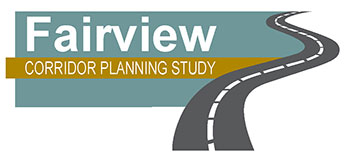
What is a Corridor Planning Study?
The Fairview Corridor Planning Study is a planning-level assessment occurring before project-level environmental compliance activities under the National and Montana Environmental Policy Acts (NEPA/MEPA). MDT uses this process to provide a better link between early transportation planning and environmental compliance efforts. The process involves conducting a planning-level evaluation of safety, operational, and environmental conditions to identify needs and constraints.
MDT can save time and money in subsequent project phases by facilitating early identification of constraints through coordination with local governments, resource agencies, and other stakeholders; screening of possible improvement options; and elimination of infeasible options.
A planning study considers multiple improvement options to address the needs and objectives within a study area. The planning process is distinct from a NEPA/MEPA environmental compliance document and from design, right-of-way acquisition, and construction phases for an individual project.
For additional information, refer to MDT's planning study process.
What does a “pre-NEPA/MEPA planning study” mean?
The National and Montana Environmental Policy Acts (NEPA/MEPA) require state and federal agencies to disclose impacts resulting from state and federal actions. In the context of transportation projects, the NEPA/MEPA process is intended to assist officials in making transportation decisions, while taking into account the human and natural environment and the public’s need for safe and efficient transportation. The NEPA/MEPA process ensures that information about anticipated transportation project impacts is available to the public before decisions are made and carried out.
The Fairview Corridor Planning Study is a pre-NEPA/MEPA study that involved a planning-level assessment of the study area. The planning process included a review of potential environmental issues and concerns. The results of this planning-level environmental review could be used to assist in future NEPA/MEPA environmental compliance phases for an individual project.
Who conducted this study?
The Montana Department of Transportation conducted this study in partnership with the Federal Highway Administration (FHWA) and in coordination with the North Dakota Department of Transportation (NDDOT), as well as Fairview, East Fairview, Richland County, and McKenzie County officials. DOWL assisted MDT in completing the planning effort by June 2016.
What steps will be taken during the study?
Steps in the planning process are described below. Public involvement opportunities were included throughout the planning process.
- Develop study work plan
The planning team assessed the complexity of issues within the study area and the level of effort required to address the issues. - Develop existing and projected conditions report
The team considered geometric characteristics, access density, pavement condition, crash history, traffic volumes, and operational characteristics within the corridor, as well as environmental resources within the study area. - Identify needs and objectives
The planning team identified needs and objectives for the study corridor. Comments submitted during public and resource agency involvement efforts were considered during this process. - Identify and evaluate improvement options
The planning team identified potential alternative routes south, west, and east of Fairview. Alternative routes were evaluated based on their ability to address the study needs and objectives while minimizing impacts to environmental and social resources. The study also considered potential improvements to existing routes. - Prepare draft corridor planning study report
The planning team prepared a draft report documenting the planning process, including public and agency input, key findings, recommendations, and next steps. The team sought comments on the draft report from resource agencies, stakeholders, and members of the public. - Finalize corridor planning study report
The planning team finalized the study report after considering comments from members of the public, resource agencies, and other interested parties. Recommendations from the study will assist MDT in identifying potential projects based on needs, objectives, and funding availability.
What happens next?
A planning study considers multiple improvement options within the study area. This early planning process is distinct from the environmental compliance, design, and construction phases of an individual project. Any future steps will be determined by MDT in conjunction with FHWA, NDDOT, Fairview, East Fairview, and Richland and McKenzie Counties.
How was the public involved in the study?
The public was encouraged to participate in the planning process. Two informational meetings were held during the study. The date, time, and location for these meetings were announced before each event through local media and this website. Members of the public were also invited to review information posted on this website and provide input throughout the study.
MDT and DOWL collected and considered all comments to better understand potential issues, concerns, opportunities, and constraints. The planning team has recommended improvement options that best meet the needs and objectives developed through the planning process.
How was the public informed throughout the process?
MDT encouraged members of the public to join the study mailing list by submitting contact information to Sarah Nicolai by email or by submitting a comment through MDT’s online comment portal.
Study information was published on this website, in local media venues, and via newsletters throughout the planning study process.
